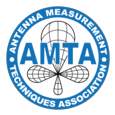Lars Jacob Foged,Andrea Giacomini, Roberto Morbidini, Vincenzo Schirosi, Sergey Pivnenko, November 2014
In classical probe-corrected spherical near-field measurements, one source of measurement errors, not often given sufficient consideration is the probe [1-3]. Standard near-field to far-field (NFFF) transformation software applies probe correction with the assumption that the probe pattern behaves with a µ=±1 azimuthal dependence. In reality, any physically-realizable probe is just an approximation to this ideal case. Probe excitation errors, finite manufacturing tolerances, and probe interaction with the mounting interface and absorbers are examples of errors that can lead to presence of higher-order spherical modes in the probe pattern [4-5]. This in turn leads to errors in the measurements. Although probe correction techniques for higher-order probes are feasible [6], they are highly demanding in terms of implementation complexity as well as in terms of calibration and post-processing time. Thus, probes with high azimuthal mode purity are generally preferred. Dual polarized probes for modern high-accuracy measurement systems have strict requirements in terms of pattern shape, polarization purity, return loss and port-to-port isolation. As a desired feature of modern probes the useable bandwidth should exceed that of the antenna under test so that probe mounting and alignment is performed only once during a measurement campaign. Consequently, the probe design is a trade-off between performance requirements and usable bandwidth. High performance, dual polarized probe rely on balanced feeding in the orthomode junction (OMJ) to achieve good performance on a wide, more than octave, bandwidth [5-7]. Excitation errors of the balanced feeding must be minimized to reduce the excitation of higher order spherical modes. Balanced feeding on a wide bandwidth has been mainly realized with external feeding network and the finite accuracy of the external components constitutes the upper limits on the achievable performance. In this paper, a new OMJ designed entirely in waveguide and capable of covering more than an octave bandwidth will be presented. The excitation purity of the balanced feeding is limited only by the manufacturing accuracy of the waveguide. The paper presents the waveguide based OMJ concept including probe design covering the bandwidth from 18-40GHz using a single and dual apertures. The experimental validation is completed with measurements on the dual aperture probe in the DTU-ESA Spherical Near-Field facility in Denmark. References: [1]Standard Test Procedures for Antennas, IEEE Std.149-1979 [2]Recommended Practice for Near-Field Antenna Measurements, IEEE 1720-2012 [3]J. E. Hansen (ed.), Spherical Near-Field Antenna Measurements, Peter Peregrinus Ltd., on behalf of IEE, London, UK, 1988 [4]L. J. Foged, A. Giacomini, R. Morbidini, J. Estrada, S. Pivnenko, “Design and experimental verification of Ka-band Near Field probe based on wideband OMJ with minimum higher order spherical mode content”, 34th Annual Symposium of the Antenna Measurement Techniques Association, AMTA, October 2012, Seattle, Washington, USA [5]L. J. Foged, A. Giacomini, R. Morbidini, “Probe performance limitation due to excitation errors in external beam forming network”, 33rd Annual Symposium of the Antenna Measurement Techniques Association, AMTA, October 2011, Englewood, Colorado, USA [6]T. Laitinen, S. Pivnenko, J. M. Nielsen, and O. Breinbjerg, “Theory and practice of the FFT/matrix inversion technique for probe-corrected spherical near- eld antenna measurements with high-order probes,” IEEE Trans. Antennas Propag., vol. 58, no. 8, pp. 2623–2631, Aug. 2010. [7]L. J. Foged, A. Giacomini, R. Morbidini, "Wideband dual polarised open-ended waveguide probe", AMTA 2010 Symposium, October, Atlanta, Georgia, USA. [8]L. J. Foged, A. Giacomini, R. Morbidini, “ “Wideband Field Probes for Advanced Measurement Applications”, IEEE COMCAS 2011, 3rd International Conference on Microwaves, Communications, Antennas and Electronic Systems, Tel-Aviv, Israel, November 7-9, 2011.
